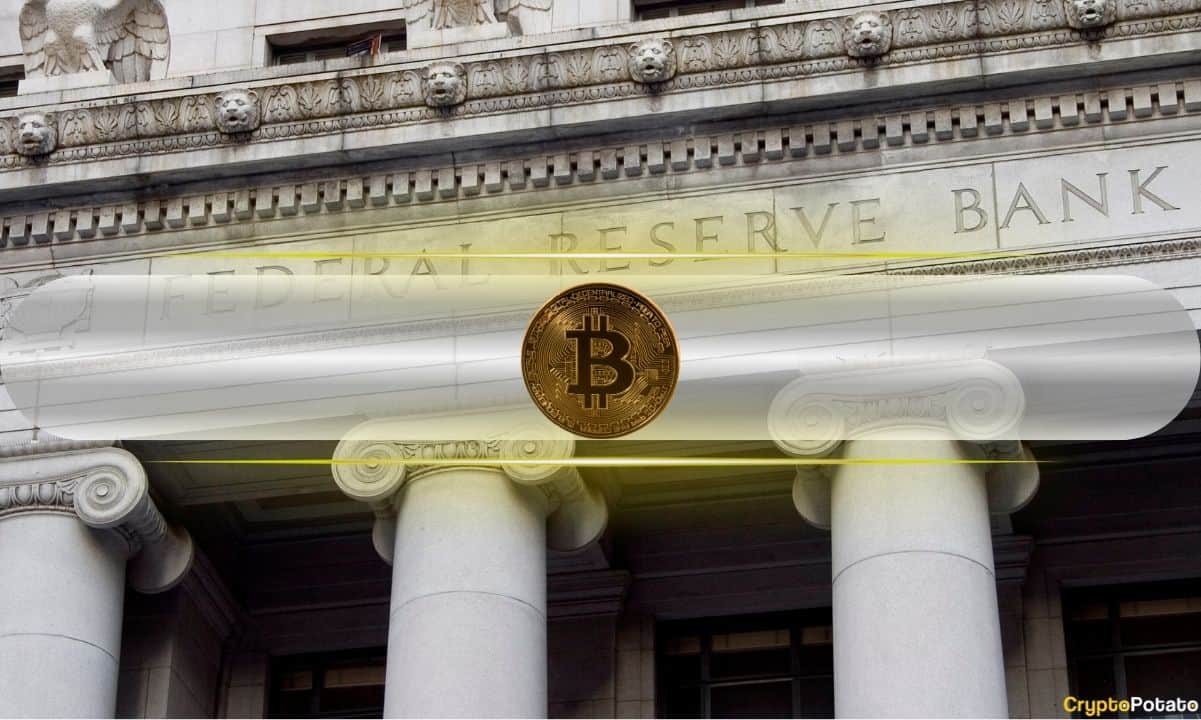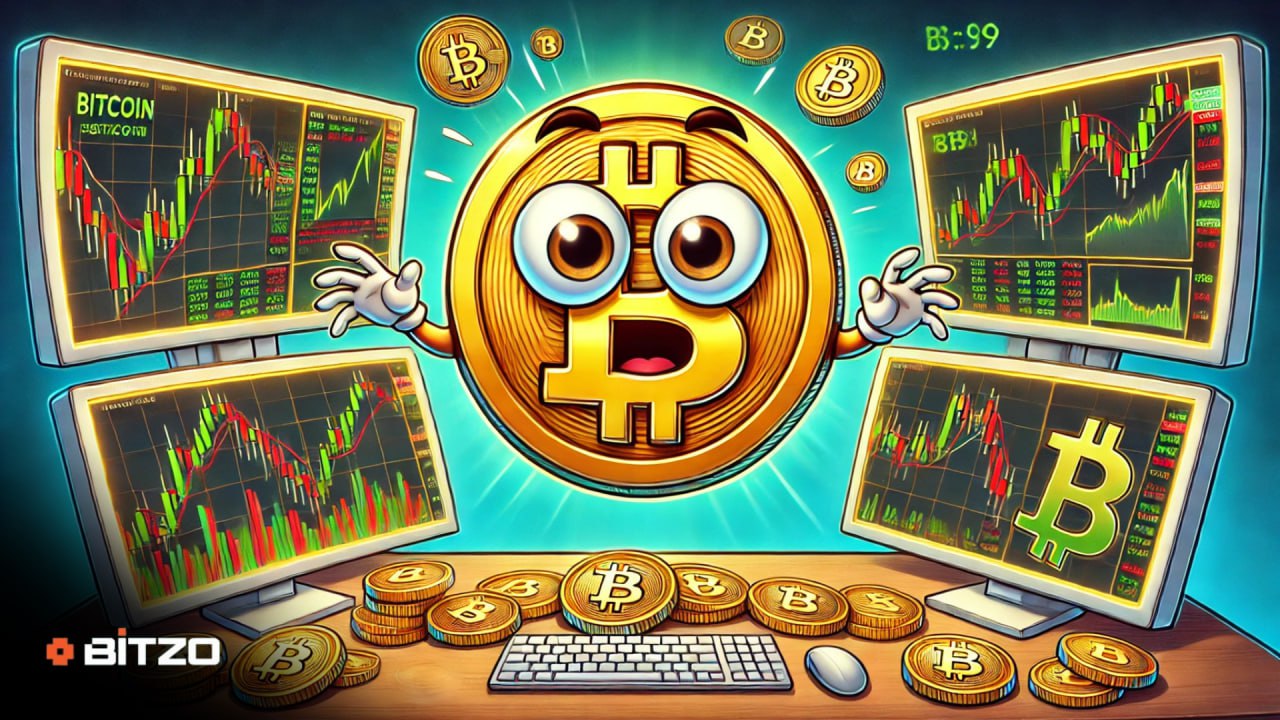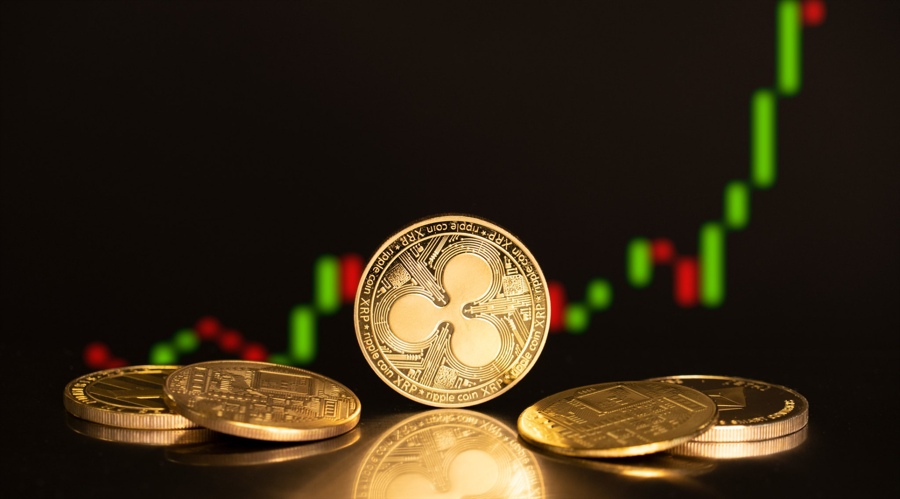
The post Sam Bankman-Fried Moved to Terminal Island, Home to Infamous Inmates appeared first on Coinpedia Fintech News FTX founder Sam Bankman-Fried was moved to the low-security Federal Correctional Institution Terminal Island in Los Angeles on April 18, 2025. Notably, this prison once housed several high-profile inmates, including cult leader Charles Manson, notorious crime boss Al Capone, and former Theranos COO Ramesh “Sunny” Balwani, who was convicted of fraud. Bankman-Fried Moved from Victorville to Terminal Island Before landing at the terminal Island in Los Angeles, Fried was held at FCI Victorville , a medium-security prison in San Bernardino County which is known for its tough conditions and political atmosphere. Just a month earlier, he was briefly held at the Federal Transfer Facility in Oklahoma City during his relocation process. The prison shuffle comes shortly after Fried made headlines for giving an unauthorised Jailhouse interview to media figure Tucker Carlson , His high-profile case has him under the public eye for his role in the FTX collapse. Sam Bankman-Fried is doing 25 years behind bars, and is now sharing a cell block with Diddy. He joins us from prison for an update on his new life. (0:00) What Has Prison Been Like? (2:28) Was SBF Ever on Adderall? (4:42) SBF Meeting Diddy in Prison (7:01) How Prison Has Changed… pic.twitter.com/mNSNktLibg — Tucker Carlson (@TuckerCarlson) March 6, 2025 Fried’s Plan to Rebuild Image After the dramatic collapse of FTX, Fried reportedly created a Google Doc outlining ways to rebuild his public image. One of the ideas included appearing on Tucker Carlson’s show (spelled “Tucker Carlsen” in his draft) and positioning himself as a Republican in opposition to the “woke agenda.” Legal experts now believe that Fried’s surprising shift towards right-wing messaging could be a part of his calculated effort to secure a pardon from President Trump. By positioning himself as a Republican and aligning with conservative views, some believe that SBF is trying to gain favor with Trump, who has been known to issue pardons in high-profile cases. He was convicted in November 2023 on multiple fraud charges for his role in the dramatic collapse of FTX. At his sentencing in March 2024, Judge Lewis A. Kaplan remarked that Fried knew his actions were wrong and criminal, but he still took the risk believing that he would not get caught. He is now serving a 25-year sentence and has been ordered to pay $11 billion for his role in one of the biggest crypto frauds in history.
coinpedia
You can visit the page to read the article.
Source: coinpedia
Disclaimer: The opinion expressed here is not investment advice – it is provided for informational purposes only. It does not necessarily reflect the opinion of BitMaden. Every investment and all trading involves risk, so you should always perform your own research prior to making decisions. We do not recommend investing money you cannot afford to lose.
Fed’s Recession Fears Could Catapult Bitcoin Prices to $1M By 2030

Powell warned Wednesday, Apr. 16 of a stagflationary situation ahead with “higher inflation and slower growth.” He said the scenario would be “challenging” for the central bank to make policy decisions. The Fed chair said there would be tension between the central bank’s twin mandates from Congress: maximum productive employment with minimum consumer price inflation. Meanwhile the New York Federal Reserve’s Treasury yield curve recession indicator gives a 56% chance of the US economy going into recession in July. Economic Fears Could Catalyze Bitcoin’s Trajectory to $1 Million In Q1, BlackRock’s crypto chief Robbie Mitchnick said while speaking with Yahoo Finance, “A recession would be a big catalyst for Bitcoin.” “It’s long liquidity, meaning it benefits from increased fiscal spending, deficit accumulation, and lower interest rates—all typical features of a recessionary environment,” Mitchnick said. The inflationary recession the US central bank fears may be the catalyst that launches Bitcoin to the stratospheric $1 million forecast Block and CashApp founder Jack Dorsey made for by 2030. Here are five ways markets expect that to happen: 1. There Are No Tariffs on Cryptocurrency There are no tariffs on Bitcoin. — Michael Saylor (@saylor) April 3, 2025 Unlike imported steel and manufactured items, there are no Trump Administration tariffs for Bitcoin or cryptocurrencies on the table. Bitcoin is an amorphous global Web3 layer network that exists in a borderless cyberspace. Javier Molina, market analyst for the eToro trading brokerage platform, said in mid-April: “Right now Tesla, Apple, and Google are showing more volatility than bitcoin, because that’s where the tariffs have a direct impact.” US import tariffs slow the exchange of dollar exports in exchange for foreign materials and manufactured goods. As a result, countries that import fewer dollars may opt to import Bitcoin instead. 2. National and Corporate BTC Stockpiles Race In fact, the US government’s own official stockpile plans have launched an international land grab for the scarce supply of remaining Bitcoin, capped at 21 million. Fortune Magazine reported on Thursday that Binance is in talks with several world powers to help them implement sovereign Bitcoin funds. Meanwhile, a Trump White House official even discussed an idea in April with Anthony Pompliano to use tariff revenue to buy Bitcoin for the US strategic national reserve. These shifts are tectonic in the scale of their implications for present market valuations. Following in the wake of US leadership and Strategy’s successes , corporate balance sheets and whale-sized BTC addresses began accumulating Bitcoin like never before in Q1. 3. Fed Rate Cuts God Candle Bitcoin’s Price Yes pic.twitter.com/m3wfn7802r — Simply Bitcoin (@SimplyBitcoinTV) April 18, 2025 Furthermore, if Trump’s trade war leads to a slowing economy and rising prices, keeping Powell occupied at the moment, it could be another tsunami for Bitcoin’s price, with entrenched support levels locked in at the historical factor of 10 times on a roughly 4-year market cycle. The financial crisis-era Fed rate cuts to nearly 0% in 2009 saw Bitcoin’s price move from $0.003 in 2010 to $469 in December 2015, when the central bank began raising rates again. The global asset price crash in 2020, followed by emergency rate cuts to 0% in May 2020, launched Bitcoin’s price again from $5,245 on Mar. 18, 2020, to $66,953 in Nov. 2021. Then, after pulling back for three months, Bitcoin immediately continued revising ruthlessly downward following the Fed’s pivot to rate hikes in Mar. 2022. That took markets to below $16,000 before the year was over. Later, as the Fed started trimming rates down again in September 2024, like clockwork, Bitcoin’s price rallied to historic record high levels. A slowing economy would likely prompt the printing press to target lower interest rates that ease lending to get businesses moving again. This has historically had the effect of pushing prices up for consumers, stock traders, and Bitcoin buyers. 4. US Fiscal Deficits Are Rocket Fuel For BTC The Congressional Budget Office expects the US yearly national deficit in tax revenue to cover spending to continue to grow from its current record proportions. The CBO also predicts the national debt will be 156% of GDP by 2055. There is a direct correlation since 1980 between US recessions and federal deficit spending rising to and becoming entrenched at new record high levels, according to data published by the St. Louis Federal Reserve. Washington deficit spending levels also historically trend with Bitcoin prices because the government hogs up credit markets, creating upward pressure on loan rates that brings on more of the Fed’s printing press to keep business flowing. 5. Easy Dollars Make Hard Bitcoin More Dear In Recessions Bitcoin’s world-historically disruptive growth as an independent Internet currency seems to exemplify the economic principle expressed by Gresham’s Law: “Bad money drives out good from circulation.” Thomas Gresham, who founded the Royal Exchange of the City of London in the 16th Century, noticed a pattern in the circulation of metal coins off the mint. During uncertain times, merchants would spend and deposit the coins that were easier to make, like copper and silver, but hoard the most difficult coins, like gold. International currency economists found the same pattern in free-floating global currency exchanges in the 20th century monetary era as central banks adjusted supplies and loan rates. While dollars are easy for the Fed to make as long as the economy has the capacity to grow production to cover its loans, BTC is very hard to make, but demand for it continues to grow. Bitcoin’s price was up 37% on the 12-month window the week ending Friday, Apr. 18. Meanwhile, the high-growth, tech-focused Nasdaq Composite was up 4.39% on a one-year basis. The post Fed’s Recession Fears Could Catapult Bitcoin Prices to $1M By 2030 appeared first on CryptoPotato . coinpedia

Bitcoin Price Analysis: BTC Scrapes Past $85,000 As Markets Await Breakout
Bitcoin (BTC) registered a marginal increase to move past $85,000. The flagship cryptocurrency has been locked in a narrow sideways range all week. Volatility has dried up and price action remains muted. BTC is marginally up over the past 24 hours and trading around $85,190. Robert Kiyosaki Makes Another Bitcoin Prediction Renowned author Robert Kiyosaki has predicted that Bitcoin could rally to $1 million by 2035, fueled by an economic crash and burgeoning US debt. BTC is marginally up over 1%, having crossed $85,000. Despite adverse macroeconomic conditions, Bitcoin ETF inflows and bullish sentiment continue to push the price higher. Kiyosaki warned investors of a “greater depression” fueled by record-high US debt, rising unemployment, and collapsing 401(k)s. He reiterated advice from his books, including Rich Dad and Poor Dad and Rich Dad’s Prophecy, and urged traders to buy Bitcoin , Gold, and silver to weather the incoming crisis. “If a poor person bought a few ounces of gold or silver or 1/2 of a Bitcoin I predict they may become the new rich. Once this Depression is over, I strongly believe, by 2035, that one Bitcoin will be worth over $1 million. Gold will be $30k, and silver $3,000 a coin. It will be the easiest money you ever made.” Bitcoin Whales Keep Strong Accumulation Trend Bitcoin has entered a consolidation phase after enduring weeks of selling pressure and heightened volatility. Despite failing to break past the $90,000 level, BTC has not ceded ground to the sellers and held firm above $80,000 despite the broader market sinking into deeper losses. Despite BTC’s resilience and stable price action, macroeconomic adversities persist thanks to Donald Trump’s tariff policies and escalating trade tensions between the US and China. However, on-chain metrics suggest Bitcoin whales remain confident. According to data from Glassnode, wallets holding more than 10,000 BTC continue to accumulate, with their trend score near 0.7, suggesting sustained bullish sentiment among long-term holders. Meanwhile, smaller wallets containing less than 1 BTC to 100 BTC have started easing distribution, with the 10-100 BTC group approaching a 0.5 trend score. Lyn Alden Scales Back Bitcoin Forecast Macroeconomist Lyn Alden believes Bitcoin will finish 2025 higher than its current price of $85,000. However, she stated that it could have been significantly higher had it not been for President Trump’s tariff announcement in February. “Before all this tariff kerfuffle, I would have had a higher price target. My guess is that we end up higher at the end of the year than we are now, at least.” According to Alden, a massive liquidity unlock could push Bitcoin to reach more optimistic targets, similar to those before Trump introduced tariffs. Alden stated there was a good chance Bitcoin would reclaim $100,000 before the end of the year. However, she emphasized the broader financial market down days will remain a challenge for the flagship cryptocurrency, especially since Bitcoin trades 24/7, unlike traditional markets with specified trading hours. Alden stated that crypto’s round-the-clock trading contributed to its volatility, particularly when markets are jittery. “Because it trades 24/7, if people are worried about how things are going to open on Monday, some pools of capital can sell their Bitcoin on a Sunday and prepare.” Bitcoin (BTC) Price Analysis BTC has entered a narrow range, with prices moving sideways all week. BTC’s rejection around the $86,000 level set the tone for the week. While the flagship cryptocurrency has been relatively stable this week, analysts believe volatility will return, with many predicting an imminent rally. CryptoQuant contributor Mignolet pointed out that 170,000 BTC had been moved from the 3-6 month holder cohort. Historically, such large movements have preceded notable price movements. Another analyst, Master of Crypto shared an observation about the realized price of the short-term holders (STH) versus long-term holders (LTH). According to the analyst, most STHs are primarily in the red, with a realized price of $92,700. On the other hand, LTHs have a realized price of $26,500, meaning they are sitting on gains of over 200%. BTC saw considerable movement towards the end of the previous week, rising over 8% on Wednesday to cross $80,000 and settle at $82,600. However, the rally lost momentum on Thursday, dropping almost 4% to slip below $80,000 and settle at $79,592. Sentiment changed on Friday as buyers returned to the market. As a result, BTC rose almost 5% to reclaim $80,000 and settle at $83,370. Buyers retained control on Saturday as the price registered an increase of 2.41% to cross $85,000 and settle at $85,378. Despite the positive momentum, BTC was back in the red on Sunday, dropping almost 2% and settling at $83,776. Source: TradingView BTC started the current week positively despite waning momentum, rising over 1% to $84,619. However, price action turned bearish on Tuesday as BTC fell 1.08% to $83,701. BTC recovered on Wednesday, registering a marginal increase and then rising 1.11% on Thursday to settle at $84,962. The price fell back in the red on Friday, registering a marginal decline and settling at $84,518. The current session sees BTC up almost 1%, going above $85,000 and trading at $85,354. With analysts expecting a jump, BTC could reach $90,000 if buyers retain control. Disclaimer: This article is provided for informational purposes only. It is not offered or intended to be used as legal, tax, investment, financial, or other advice. coinpedia











